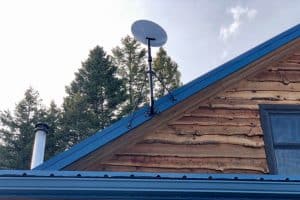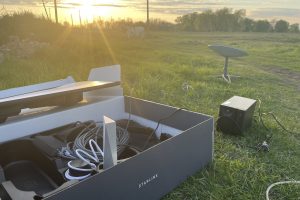For the second time, a SpaceX Falcon 9 booster has completed its eleventh launch, spaceflight, and landing – helping deliver dozens of new Starlink satellites to orbit in the process.
After a one-day delay for “recovery weather,” Falcon 9 booster B1058 lifted off with 46 Starlink 4-8 satellites on February 21st. The well-worn rocket performed as expected, boosting Falcon 9’s upper stage and Starlink payload above the majority of Earth’s atmosphere, coasting hundreds of miles downrange, and ultimately landing aboard drone ship A Shortfall of Gravitas (ASOG) less than nine minutes after liftoff. The mission’s single-use upper stage also performed nominally and completed two burns of its Merlin Vacuum engine before spinning up and releasing its stack of satellites a bit like a deck of cards.
For B1058, the mission was its 11th orbital-class launch and landing since May 2020, when it become the first US or SpaceX-made rocket to launch astronauts since 2011. Every one of the booster’s launches has sent it coasting more than 100 kilometers (62 mi) above Earth’s surface – a fairly arbitrary internationally-agreed-upon distinction between the atmosphere and ‘space’.
In one of the most impressive displays of orbital-class reusability in the history of spaceflight, Falcon 9 B1058 completed those 11 launches in 21 months, averaging one launch every 57.5 days for the better part of two years. However, a different Falcon 9 booster could reportedly break that record barely a week from now.



SpaceX has at least two more launches scheduled over the next two weeks. Starlink 4-11 could launch from the company’s California pad as early as 7:40 am PST (15:40 UTC), February 25th, and is expected to use Falcon 9 booster B1063, which will be flying for the fourth time. Subsequently, as early as ~1 pm EST (18:00 UTC), March 3rd, Falcon 9 B1060 is reportedly scheduled to launch Starlink 4-9, becoming the third SpaceX booster (after B1051 and B1058) to perform eleven orbital-class launches.
Barring weeks of delays, B1060 will beat B1058’s average of one launch every 57.5 days, launching 11 times in just over 20 months or once every 55.5 days. It will likely be at least half a year until the next SpaceX booster (B1061) crosses the 10 or 11-flight mark.





